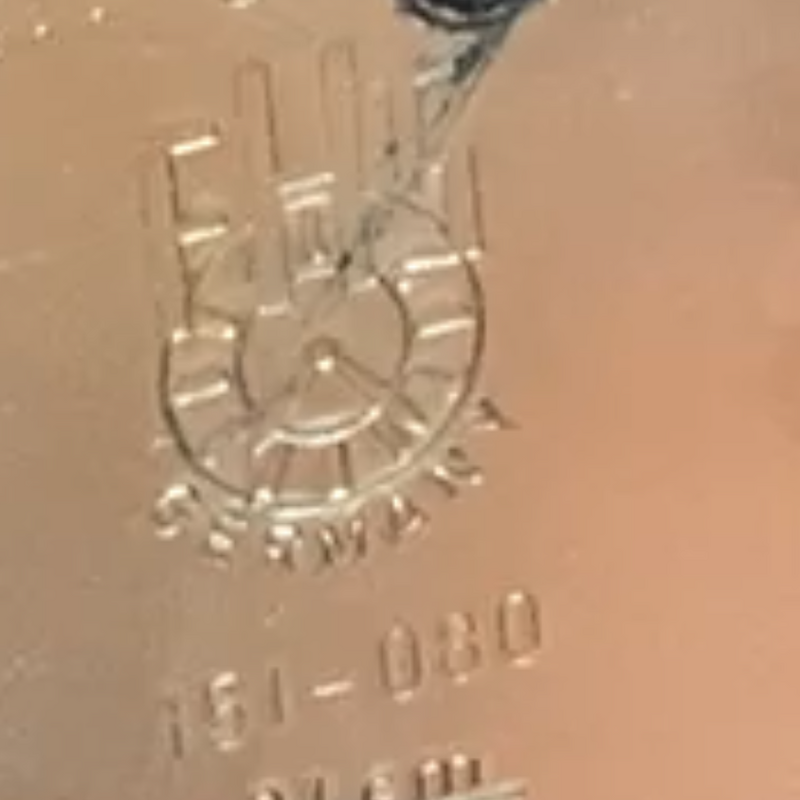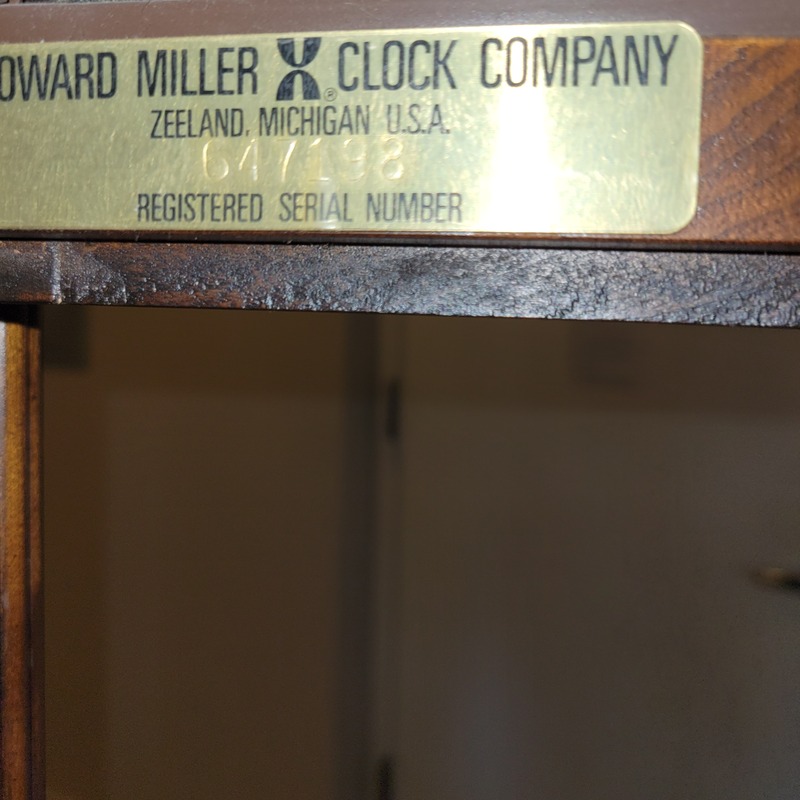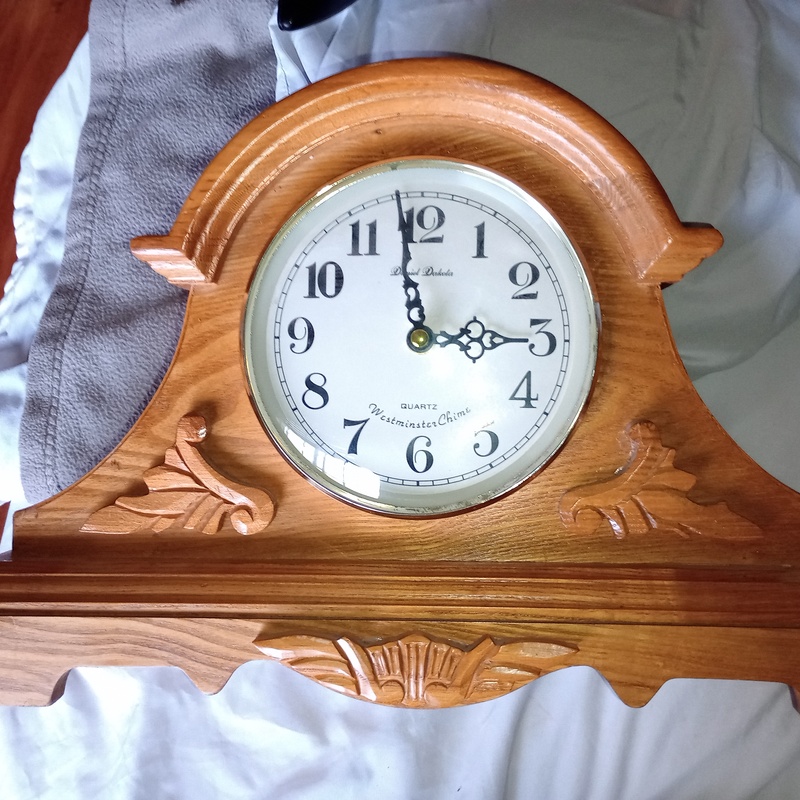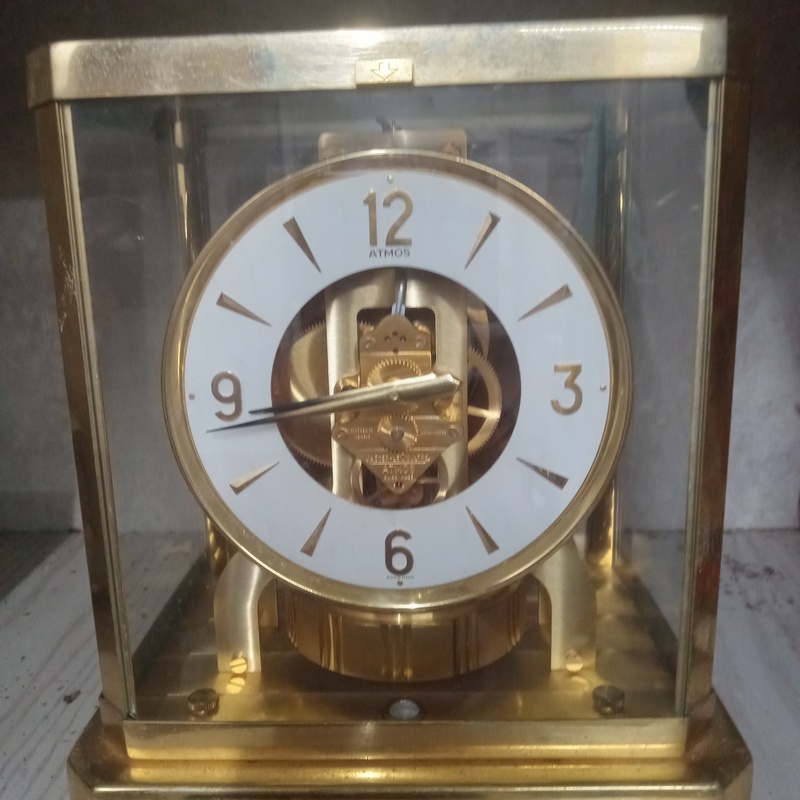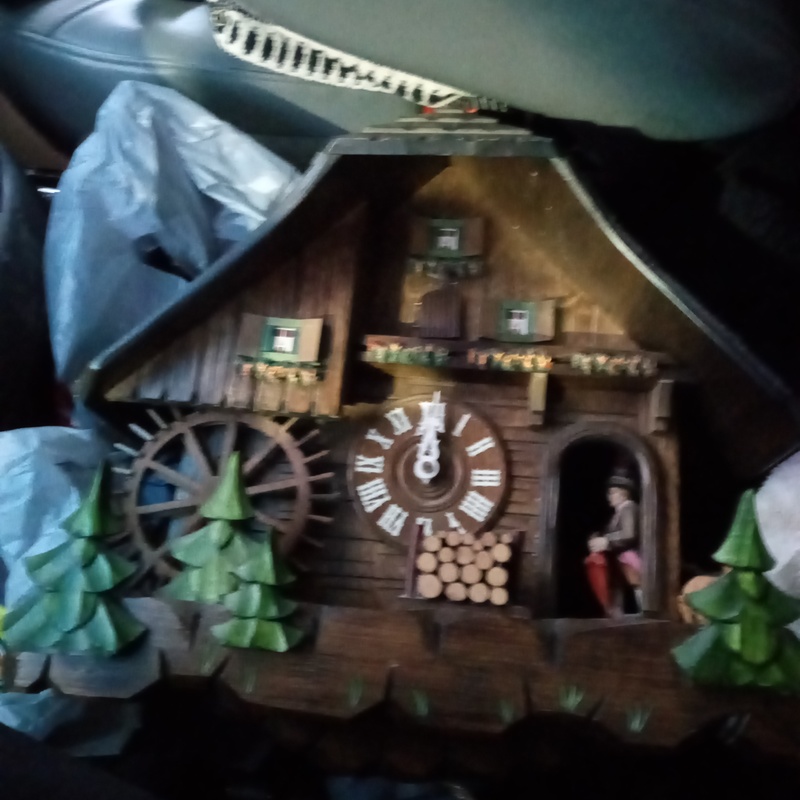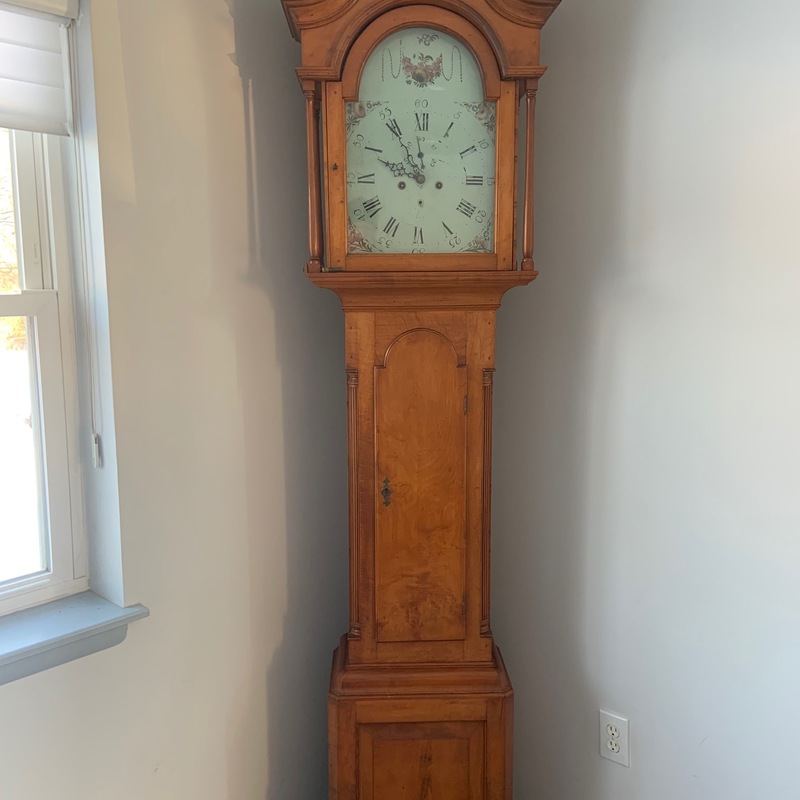

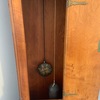
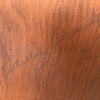
Grandfather Clock
Approximately 7.5' tall grandfather clock
Family Acquired many years ago
Auction House
Maybe


Hello Steven,
Thank you for sending in this tallcase clock to mearto.com for an appraisal. I shall try to do that for you today.
TITLE:
Maple (or cherry), two weight, eight-day time and hourly striking tall case clock, unsigned, case attributed to Pennsylvania, dial and movement attributed to England/Scotland. The case and dial/movement together by association and dating to 1790-1810.
{My conception of this clock is that a family brought their longcase clock dial, movement, weights and pendulum over from the U.K., likely from Scotland not long after 1800, and had a local cabinetmaker, most likely in Pennsylvania make the case for the mechanical components they had with them from their earlier home.}
Case: Approximately 89” in height, this is a maple (or cherrywood) tallcase clock made in the Chippendale manner of carving and specifically reflecting a late version of Delaware Valley case construction. The hood has a faux caddy-top and a concave molded broken arch pediment (swan-neck) with applied volutes in the terminals of the arch centering a wooden plinth supporting a wooden urn and spire finial. The tympanum has an arched cornice above the arched glazed dial door with tapered solid, free standing wooden colonnettes (note the colonnettes stand very slightly farther from the door at the top than at the base, a Pennsylvania design). There are also free standing colonnettes at the back of the hood. A concave molding transitions down to the trunk with its full-length door with astragal (tombstone) shaped top, and Pennsylvania brass strap hinges and flanked by fluted carved quarter columns at the front case corners. An ogival molding leads down to the squarish base with an inset concentrically shaped panel, flanked by flat chamfered case corners ending in lamb’s tongues. The case rests on full length carved ogival feet with carved heels. The case is fully wooden-pegged. . . . . .
The case represents a slightly later version of the Chippendale Pennsylvania style, i.e., the feet represent the height of Chippendale carved feet while the volutes in the arch terminals represent a later evolution of the Chippendale style. The same is seen in the corner columns of the trunk and base, i.e., the trunk has fully carved quarter columns with wooden capitals and bases while the base has a later degradation of that form with flat chamfered columns and no fluting. The solid colonnettes also are seen during the federal Period rather than during the Chippendale era of cabinetry where prior to c. 1790 the colonnettes would be fluted or reeded, even in the countryside outside of Philadelphia.
Dial: This is a white painted arched iron dial with roman hour chapter ring, open dotted minute track with Arabic markers placed every five minutes around the periphery of the main dial. The dial center has a circular subsidiary second’s dial under the twelve and a circular calendar sub-dial over the six. There are steel Chippendale hands and the dial is unsigned by the maker. The four spandrels are painted with four colorful scenes of roses on the vine, outlined in gilt gesso dots and curled dashes. The large lunette is polychrome painted with a bouquet of pink roses, also with leaves and vines from which draperies of flowers flow.
This dial looks most like a Birmingham dial painted by either of two firms, James Wilson or Thomas Osborne. The name be on the false plate behind the dial. Knowing that both Wilson and Osborne were the finest English dial painters of their time (1772-1812), this dial is not one of their best examples. The fineness of their spandrels paintings is not shown at their best here and that is why there is a question about who painted this dial. What I notice is that some of the Roman numerals (look particularly at the 3, 7 and 8) sit right on the black circle drawn inside of the hours. In almost all of Osborne’s and Wilson’s dials they are clearly arranged several millimeters away from that round circular line. In addition, the lunette painting is not fully up to their standards. Therefore, there is a second possibility. The earliest and best known of Scotland’s dial painters was William Dallaway of Edinburgh. He was working by 1775 and making white dials during part of the 1780s. His style, early on was like that of the Birmingham painters. He did use a false plate with his name cast into the heavy iron, so looking behind the dial at the false plate (if there is one) you might find his name. Although he copied the style of Wilson and Osborne he did not execute it as well as they did. So, this may be one of his early dials.
Movement: Unfortunately, you do not show me this but most likely it is a movement made in the English-style, whether made in England or Scotland. So, I would expect heavy solid brass rectangular plates connected with four brass pillars at the corners. Look at the pillars because in Scotland they tapered their pillars toward the central brass knopping (ring) whereas the English makers did not. There should be an anchor recoil escapement, fly-wheel and rack and snail striking with grooved barrel drums to take up these two iron weights (the shape of the weights does not look like those made in America, but that is not 100% certain), the latter powering the movement for eight days and cause striking on an overhead bell on the hour. What is of most importance is the dark pendulum painted in polychrome colors of a flower. Scotland was responsible for over 95% of such painted pendulum bobs.
CONDITION:
Case – Refinished at some point so that the surface is lacking an aged patina. Overall, the form, lines and proportions of the case are very good (by American standards).
Dial – Wear to the Roman hours and the calendar ring which is also lacking its hands. The worn dial has not been retouched and is in good condition.
Movement – Not seen but assumed to be original to the dial and pendulum and weights.
Therefore, this is a form of marriage that is accepted by some collectors since it was a legitimate association of the mechanism with a cabinet made in the USA and was as valid as the people who took the trouble to bring them across the Atlantic. I accept this tallcase clock as it is and price it as an original American clock with roots dating back to the “Old Country”.
COMPONENTS OF DELAWARE VALLEY TALLCASE:
1 – Heavily carved broken arch pediment with prominent carved terminals
2 – Slightly splayed, free- standing hood colonnettes and usually side-lights, the latter not present here.
3 – Shaped trunk door and base panels, usually matching, but not necessarily.
4 – Fluted quarter columns in both the waist and the base.
5 – Ogee bracket feet.
PRICING:
Unfortunately, the dial is unsigned, and in these days, people are not looking to buy unsigned clocks. However, I think it is a great looking clock from an aesthetic point of view. In addition, some buyers might look upon this clock as a marriage put together by an antique dealer who may have handled this clock at some point in its history before it came to your family. These questions keep the price suppressed. Most signed American mad Pennsylvania clocks now sell in the $5000-$10000 range at auction, while unsigned examples do not make it to $5000.
The fair market value of your clock in today's market place would be in the $2500-$3250 range. Retail prices might reach twice that amount.
I struggled a bit with the lack of photos behind the dial, the case sides and the case backboard. However, I tried to do a forensic horological exam of this clock as well as I could for you. I hope this helps you to better understand the piece. It is quite handsome and I hope you continue to enjoy and try to keep it running.
Thank you for choosing mearto.com.
My best,
David

